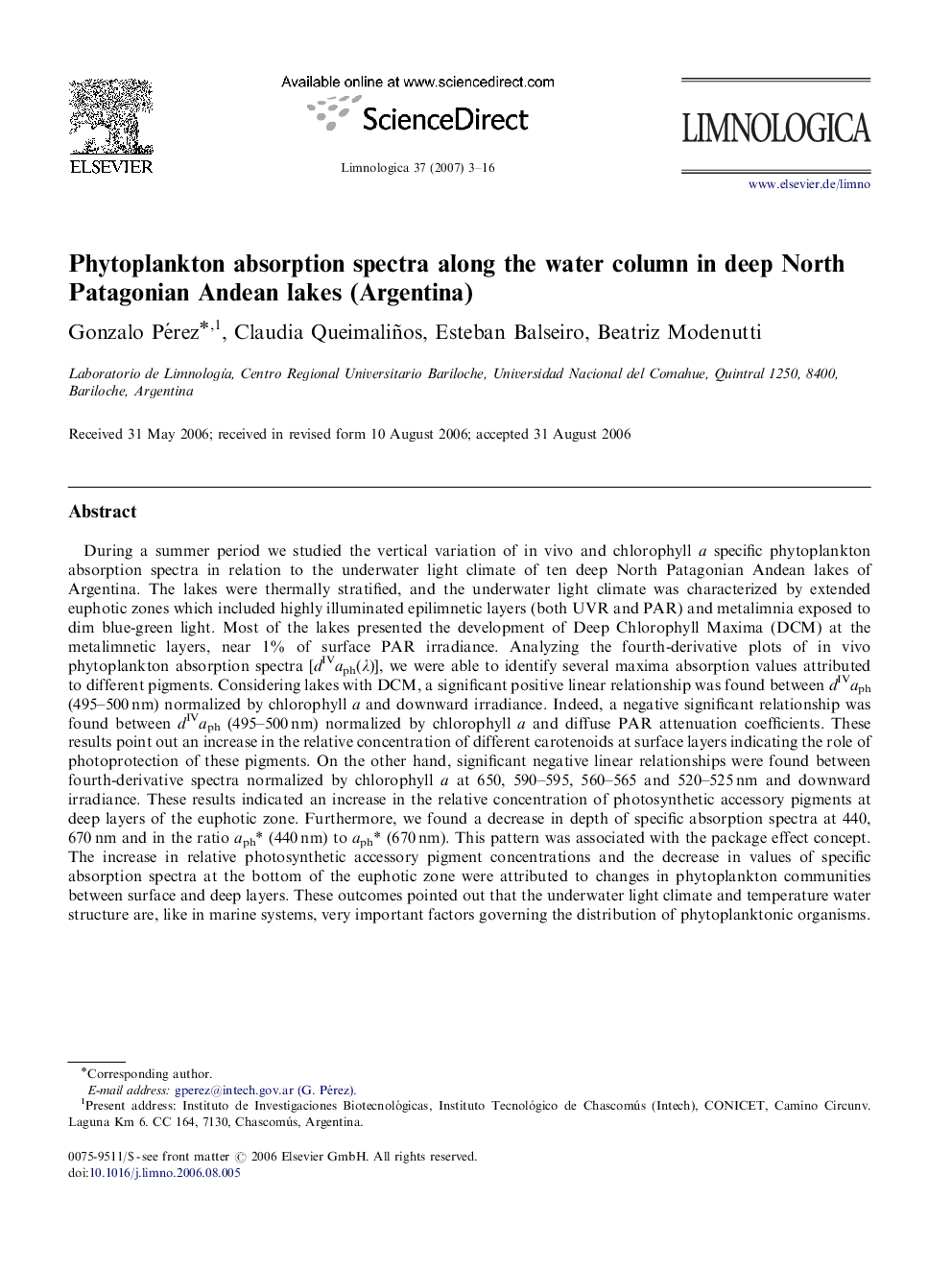| Article ID | Journal | Published Year | Pages | File Type |
|---|---|---|---|---|
| 4400722 | Limnologica - Ecology and Management of Inland Waters | 2007 | 14 Pages |
During a summer period we studied the vertical variation of in vivo and chlorophyll a specific phytoplankton absorption spectra in relation to the underwater light climate of ten deep North Patagonian Andean lakes of Argentina. The lakes were thermally stratified, and the underwater light climate was characterized by extended euphotic zones which included highly illuminated epilimnetic layers (both UVR and PAR) and metalimnia exposed to dim blue-green light. Most of the lakes presented the development of Deep Chlorophyll Maxima (DCM) at the metalimnetic layers, near 1% of surface PAR irradiance. Analyzing the fourth-derivative plots of in vivo phytoplankton absorption spectra [dIVaph(λ)], we were able to identify several maxima absorption values attributed to different pigments. Considering lakes with DCM, a significant positive linear relationship was found between dIVaph (495–500 nm) normalized by chlorophyll a and downward irradiance. Indeed, a negative significant relationship was found between dIVaph (495–500 nm) normalized by chlorophyll a and diffuse PAR attenuation coefficients. These results point out an increase in the relative concentration of different carotenoids at surface layers indicating the role of photoprotection of these pigments. On the other hand, significant negative linear relationships were found between fourth-derivative spectra normalized by chlorophyll a at 650, 590–595, 560–565 and 520–525 nm and downward irradiance. These results indicated an increase in the relative concentration of photosynthetic accessory pigments at deep layers of the euphotic zone. Furthermore, we found a decrease in depth of specific absorption spectra at 440, 670 nm and in the ratio aph* (440 nm) to aph* (670 nm). This pattern was associated with the package effect concept. The increase in relative photosynthetic accessory pigment concentrations and the decrease in values of specific absorption spectra at the bottom of the euphotic zone were attributed to changes in phytoplankton communities between surface and deep layers. These outcomes pointed out that the underwater light climate and temperature water structure are, like in marine systems, very important factors governing the distribution of phytoplanktonic organisms. In addition, the possession of specific photosynthetic accessory pigments suggests that dominant species in the DCM are well adapted to these dim blue-green light scenarios.
